
Russian Journal of Physical Chemistry A
Scope & Guideline
Elevating the Standards of Chemistry Scholarship
Introduction
Aims and Scopes
- Thermodynamics and Phase Equilibria:
Research focusing on thermodynamic properties and phase behavior in various chemical systems, including solutions, solid-liquid interactions, and complexation reactions. - Catalysis and Reaction Mechanisms:
Investigations into catalytic processes, including the synthesis of new catalysts and the study of their mechanisms, particularly in the context of environmental applications and industrial processes. - Nanomaterials and Nanotechnology:
Studies on the synthesis, characterization, and applications of nanomaterials, including their optical, electronic, and catalytic properties. - Electrochemistry and Conductivity:
Research related to electrochemical processes, including battery materials, electrolysis, and the investigation of ionic liquids and their behavior in various solvents. - Spectroscopy and Computational Chemistry:
Utilization of spectroscopic techniques and computational methods to understand molecular interactions, electronic structures, and reaction pathways. - Environmental Chemistry and Pollution Control:
Exploration of methods for the degradation of pollutants, including photocatalytic processes and the use of advanced materials for environmental remediation.
Trending and Emerging
- Sustainable and Green Chemistry:
There is a notable increase in research focused on sustainable practices, including the development of green solvents, eco-friendly reaction conditions, and waste reduction techniques. - Advanced Materials for Energy Storage:
Research on materials for energy storage applications, particularly in batteries and supercapacitors, is trending, with a focus on enhancing performance and sustainability. - Photocatalysis and Environmental Remediation:
The application of photocatalytic materials for the degradation of pollutants and water purification is emerging as a significant theme, highlighting the intersection of chemistry and environmental science. - Computational and Theoretical Studies:
An increase in the use of computational methods to predict chemical behavior, reaction mechanisms, and material properties is evident, showcasing the integration of theoretical and experimental approaches. - Nanostructured and Hybrid Materials:
Research into nanostructured materials and their hybrid combinations is trending, particularly in the context of catalysis, drug delivery, and sensor technologies. - Electrochemical Systems and Batteries:
There is a growing interest in the design and analysis of electrochemical systems, particularly in the context of lithium-ion and sodium-ion batteries, reflecting the need for efficient energy storage solutions.
Declining or Waning
- Classical Organic Synthesis:
Research papers focusing on traditional organic synthesis methods and their applications have decreased, likely overshadowed by more innovative approaches involving nanotechnology and green chemistry. - Inorganic Materials without Functionalization:
Studies centered around inorganic materials that do not include any functionalization or application-oriented research are becoming less frequent, as there is a growing trend towards functionalized and application-specific materials. - Basic Thermodynamics without Novel Applications:
Papers that only discuss basic thermodynamic principles without applying them to novel systems or real-world problems are less frequently published, indicating a shift towards more applied research. - Traditional Physical Chemistry Education:
Discussions and papers on traditional educational methods in physical chemistry are declining, as there is a trend towards integrating modern technology and innovative teaching methods.
Similar Journals
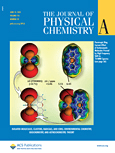
JOURNAL OF PHYSICAL CHEMISTRY A
Unlocking the secrets of matter with rigorous inquiry.Journal of Physical Chemistry A, published by the American Chemical Society, serves as a leading platform for disseminating high-quality research in the fields of physical and theoretical chemistry. With an ISSN of 1089-5639 and E-ISSN of 1520-5215, this journal maintains a rigorous standard, demonstrated by its position in the Q2 category for both physical and theoretical chemistry as well as miscellaneous medicine within its 2023 category quartiles. As part of the greater ACS network, it operates with a solid Scopus rank of 76/189, placing it within the 60th percentile, emphasizing its credibility and impact in the chemistry community. The journal's objective is to enhance the understanding of molecular phenomena through innovative experimental and computational approaches, making it essential reading for researchers, professionals, and students seeking to advance their knowledge and contribute to scientific discussion. With additional open access options, the Journal of Physical Chemistry A continues to foster collaboration and the sharing of ideas in the vibrant scientific landscape of the United States and beyond.

Reactions is a dynamic open-access journal published by MDPI, dedicated to the advancement of research in the fields of Chemical Engineering and Chemistry. Launched in 2020, the journal aims to provide a platform for scientists and researchers to share their findings and innovations, facilitating the synthesis and dissemination of knowledge within the global academic community. With an impact factor that reflects its growing influence, Reactions ranks 47th in the Chemical Engineering category and 72nd in Chemistry on Scopus, placing it within the vibrant landscape of contemporary chemical research. Housed in the picturesque city of Basel, Switzerland, the journal is committed to open access, ensuring that its high-quality content is readily available to all. This commitment not only enhances visibility but also fosters collaboration among researchers, professionals, and students striving to push the boundaries of chemical sciences. As we look towards 2024 and beyond, Reactions continues to encourage submissions that explore groundbreaking methodologies, innovative applications, and transformative theoretical frameworks in chemistry and chemical engineering.

Annual Review of Physical Chemistry
Illuminating the Path of Innovation in ChemistryAnnual Review of Physical Chemistry, published by Annual Reviews, stands as a premier source of comprehensive review articles in the field of physical chemistry. With a prestigious impact factor and a strong reputation reflected in its Q1 rankings in both Physical and Theoretical Chemistry and Medicine (Miscellaneous), this journal is essential for researchers seeking to stay at the forefront of advancements in the discipline. Covering a wide array of topics, the Annual Review of Physical Chemistry synthesizes the latest findings, trends, and methodologies, providing a vital resource for professionals and students alike. Although it does not offer open access, its scholarly rigor and in-depth analyses ensure it occupies a critical space in academia. Its consistent publication since 1975 guarantees that it has historical significance and relevance, making it a cornerstone for those engaged in cutting-edge research within the realm of physical chemistry.
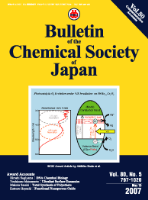
BULLETIN OF THE CHEMICAL SOCIETY OF JAPAN
Showcasing Excellence: A Nexus for Chemical ScholarshipBULLETIN OF THE CHEMICAL SOCIETY OF JAPAN, published by the esteemed Chemical Society of Japan, serves as a pivotal platform for the dissemination of cutting-edge research in the multifaceted field of chemistry. With an ISSN of 0009-2673 and an E-ISSN of 1348-0634, this journal has been integral in fostering the growth of chemical sciences globally since its inception in 1965. The journal holds an impressive Q2 ranking in the Chemistry (miscellaneous) category, indicating its relevance and influence within the academic community, as reflected by its Scopus rank of #104/408, placing it in the 74th percentile. Although it is not an open-access journal, its rich content, which spans a wide range of topics in general chemistry, remains highly valued by researchers, professionals, and students alike, affirming its crucial role in advancing both theoretical knowledge and practical applications in chemistry. As it converges towards 2024, the bulletin continues to uphold its commitment to excellence in scientific communication and research dissemination in Japan and beyond.
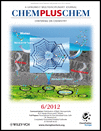
ChemPlusChem
Advancing Chemistry Through Collaboration and InnovationChemPlusChem is a premier journal published by WILEY-V C H VERLAG GMBH, dedicated to the vibrant field of chemistry. With an ISSN of 2192-6506 and an impressive Q1 ranking in Scopus's 2023 category for miscellaneous chemistry, this journal serves as a significant platform for the dissemination of high-quality research and innovative findings. Since its inception in 2012, ChemPlusChem has fostered interdisciplinary collaborations, encapsulating a wide array of topics within chemistry that facilitate scientific advancement and education. The journal features a robust open access system, enabling extensive visibility for authors while providing easy-to-access resources for researchers, professionals, and students globally. Located in Weinheim, Germany, ChemPlusChem reflects international standards and ambitions, striving to enrich the global scientific community through rigorous research and engaging scientific discourse.
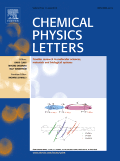
CHEMICAL PHYSICS LETTERS
Delivering High-Impact Discoveries in Chemical PhysicsCHEMICAL PHYSICS LETTERS, published by Elsevier, is a prestigious journal that has been at the forefront of advancing knowledge in the fields of physical and theoretical chemistry and physics since its inception in 1967. With an impressive impact factor reflective of its high-quality research output, this journal holds Q2 quartile rankings in both the Physical and Theoretical Chemistry and Physics and Astronomy categories for 2023. It is recognized as a key platform for disseminating groundbreaking findings, with Scopus rankings placing it within the top 76th and 66th percentiles in its respective categories. Researchers and professionals benefit from its insightful contributions and rigorous peer-review process, making it an essential resource for those engaged in cutting-edge chemical physics studies. Although the journal is not open access, it remains accessible through various institutional subscriptions, ensuring that a wide audience can explore its wealth of knowledge. Located in Amsterdam, Netherlands, the journal continues to drive innovation and collaboration across diverse scientific disciplines.

HELVETICA CHIMICA ACTA
Advancing the Frontiers of Chemical ResearchHELVETICA CHIMICA ACTA, published by WILEY-V C H VERLAG GMBH, stands as a pivotal journal in the fields of chemistry and chemical research. Established in 1918, this esteemed journal spans a diverse array of topics, including biochemistry, catalysis, drug discovery, inorganic and organic chemistry, as well as physical and theoretical chemistry. With influence reflected in its noteworthy Q2 and Q3 quartile rankings across these categories as of 2023, HELVETICA CHIMICA ACTA continues to capture the interest of the global scientific community. Although not an open-access journal, it remains accessible through various academic institutions, ensuring broad reach and collaboration opportunities. Researchers, professionals, and students alike will find its meticulously peer-reviewed articles critical for advancing knowledge and fostering innovation within the chemical sciences. As the journal converges toward 2024, it remains committed to publishing high-quality, impactful research that supports the evolution of chemistry across its multifaceted disciplines.

JOURNAL OF THE INDIAN CHEMICAL SOCIETY
Advancing Chemical Knowledge from India to the WorldJournal of the Indian Chemical Society, published by Elsevier, stands as a cornerstone in the field of chemistry, particularly representing the rich chemical research emanating from India.
With a significant history dating back to its establishment, this journal encompasses diverse disciplines including Drug Discovery, Electrochemistry, Inorganic Chemistry, Organic Chemistry, and Physical and Theoretical Chemistry, reflecting the evolving landscape of chemical sciences.
Despite being positioned in the Q3 category across multiple quarters, the journal demonstrates promising rankings in various chemistries, highlighting its commitment to advancing the knowledge and application of chemical sciences. While currently not available as an open access journal, the Journal of the Indian Chemical Society is dedicated to providing a platform for high-quality research that fosters innovation and collaboration among researchers, professionals, and students worldwide.
With its continuous publication from 1973 to the present, it serves as an essential repository for cutting-edge findings and developments in chemistry, striving to connect academia with industry and practice.
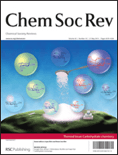
CHEMICAL SOCIETY REVIEWS
Shaping the Future of Chemistry with In-Depth AnalysisCHEMICAL SOCIETY REVIEWS, published by the Royal Society of Chemistry, serves as an essential platform for researchers, professionals, and students in the field of chemistry. Since its inception in 1972, this prestigious journal has maintained its status as a leading publication, currently positioned in the Q1 category for Chemistry (miscellaneous) and ranking #2 out of 408 journals in the field of General Chemistry on Scopus, with an impressive 99th percentile recognition. With a focus on comprehensive reviews that synthesize key advancements and methodologies, it promotes open discussion and critical analysis crucial for driving innovation within the discipline. Although it operates under a subscription model, the journal strives to foster knowledge dissemination among the global chemistry community, ensuring accessibility to cutting-edge research and insights that shape the future of chemical sciences through its extensive array of articles.

PROGRESS IN REACTION KINETICS AND MECHANISM
Fostering Innovation in Kinetic StudiesProgress in Reaction Kinetics and Mechanism is a distinguished academic journal published by SAGE Publications Ltd, focusing on the intricate dynamics of reaction kinetics and mechanisms within the field of Physical and Theoretical Chemistry. With an ISSN of 1468-6783 and an E-ISSN of 1471-406X, this journal serves as a critical platform for researchers and practitioners seeking to explore and disseminate cutting-edge findings from 1999 to 2024. Although currently not categorized as Open Access, the journal maintains a competitive profile with a Q4 categorization in its field, showcasing its commitment to fostering scientific dialogue and inquiry. The journal ranks #140 out of 189 in its category, reflecting its integral role in advancing knowledge and understanding in chemistry. Scholars, professionals, and students who aim to stay at the forefront of research in reaction kinetics will find valuable insights and findings in this esteemed publication.